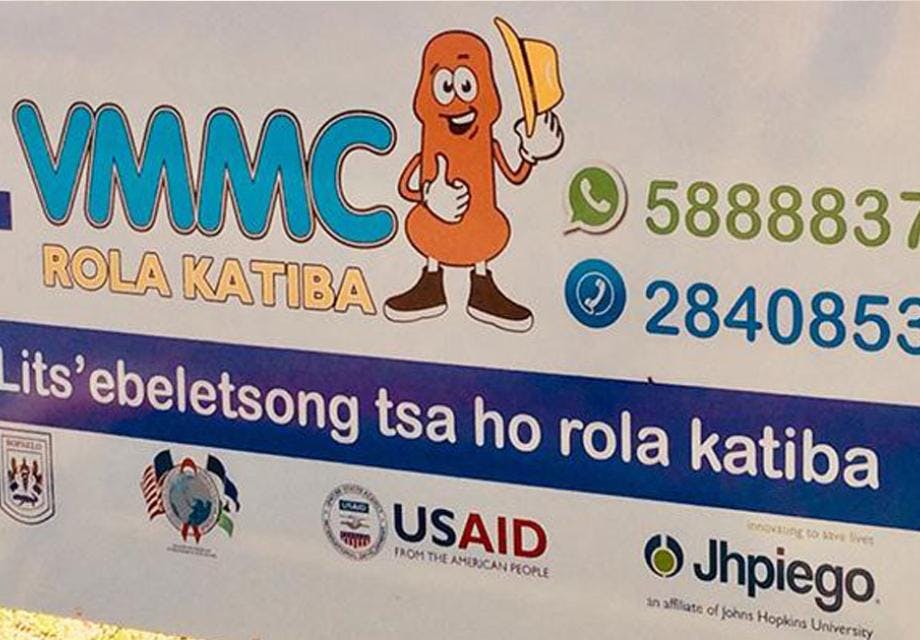Circumcision programmes can protect gay men from HIV
Caitlin Mahon
29 March 2019
Men who have sex with men are not actively targeted by circumcision programmes, but an updated review reveals they could benefit from this HIV prevention intervention.
Men who have sex with men are not actively targeted by circumcision programmes, but an updated review reveals they could benefit from this HIV prevention intervention.
Gay and bisexual men could also benefit from voluntary male medical circumcision (VMMC) programmes, especially those living in low- and middle-income countries. In an updated systematic review and meta-analysis published this week in The Lancet, circumcision was associated with a 23% decreased odds of acquiring HIV among men who have sex with men.
There is already a large body of evidence that demonstrates circumcision reduces the chances of getting HIV by up to 60% in heterosexual men (preventing HIV transmission from a woman to a man). Male circumcision also lowers the risk of heterosexual men getting sexually transmitted infections (STIs) such as genital ulcer disease, syphilis, herpes simplex virus type 2 (HSV), and human papillomavirus.
VMMC programmes had averted 230,000 new HIV infections by 2017 and are projected to avert one million by 2030. But the data is so far unclear as to whether this protective effect extends to gay men, and as such, these programmes are not actively promoted in this group.
Two previous systematic reviews and a meta-analysis published in 2008 and 2011 revealed that circumcision was not associated with a protective effect for HIV as is the case in heterosexual men. Another systematic review conducted in 2018 found a 20% reduced risk of HIV acquisition – but this study did not include much available data.
This updated analysis included 62 observational studies including 119,448 men who have sex with men. They found that the 23% decreased likelihood of acquiring HIV was highly significant among men living in low- and middle-income countries, compared to high-income countries, and most notably in South East Asia and Africa. The protective effect was also strongest among those who primarily engage in insertive anal sex, younger men who have sex with men, non-clinic-based studies, and studies in which the proportion of men who have sex with men self-reporting consistent condom use was lower.
They also found reduced likelihood of HSV infection among men who have sex with men overall and penile HPV infection among those living with HIV.
The results do not necessarily go against the data from the other systematic reviews, as they found that the protective effect of circumcision programmes became apparent after 2011 – when the last large-scale systematic review was published. The 2018 review only included a very small sample of gay men. Their analysis also included a further 22 studies, of which the majority (16) were conducted in low- and middle-income countries.
In their discussion, the authors note that the more significant protective effect in lower income countries may be the result of higher rates of HIV and lower rates of circumcision in these populations. There is also higher stability in anal sex role segregation here, that is, choosing to be exclusively receptive or insertive, which is important because circumcision would biologically be expected to protect during insertive but not receptive anal sex.
Bisexuality is also more common in these contexts. Studies suggest 40% to 70% of men who have sex with men have also had sex with women and up to 30% are married to a woman – which could present another explanatory factor.
Given that gay and bisexual men experience heavy stigma and poor access to HIV prevention services, the authors note that they should not be excluded from VMMC programmes.
“Because circumcision as an HIV prevention measure targets all men regardless of sexual orientation, MSM in countries of low- and middle-income seeking circumcision would most likely experience less stigma when accessing this service,” they commented.
“MSM in countries of low- and middle-income could benefit from advances in cheap, safe and convenient circumcision surgical techniques.”
Get our news and blogs by email
Keep up-to-date with all our latest news stories and blogs by signing up to the Be in the KNOW news digest.
